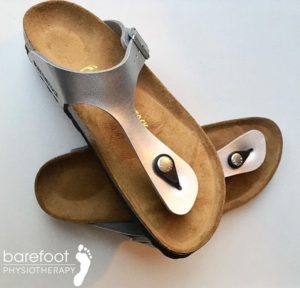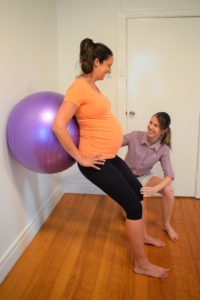Women’s Health Week: Pelvic floor and Pregnancy Tips
Pregnancy is such an exciting time, however it can also bring a lot of questions about your health & well being. As your pregnancy progresses and your baby bump grows it’s important to strengthen your pelvic floor and improve pelvic floor health. Sami Cattich from Body Birth Physio gave us her tops tips for improving the health of your pelvic floor, positive positions and how to maintain posture throughout your pregnancy!
√ – Practice Good Alignment
Poor alignment affects our pelvic floor muscles decreasing the ability of the abdominal and gluteal muscles (which are essential to the function of the pelvic floor!) to respond appropriately. Since your becomes used to what you do most frequently, continuous poor alignment while sitting, walking, or standing will result in a less functional pelvic floor.
Often when you’re pregnant, or even when you aren’t it can be so easing to stand in positions that cause us to lean our pelvis our in front. With the hips out in front of you, your pelvic floor muscles are no longer able to appropriately respond to the load of the rest of the body and belly above it, and as such will not receive the input to build the strength required to support this extra weight – so pregnant or not, think hips over heels!

√ – Sit With a Neutral Pelvis
Having a slouchy posture with your weight on your tailbone or sacrum (which is the middle of your pelvis) will put you pelvic floor muscles again into a disadvantaged position where it cannot do its job properly. Furthermore, pushing the sacrum INWARDS, especially when the ligaments are more stretchy thanks to pregnancy hormones, will have the affect of shortening the pelvic floor muscles and narrowing the pelvic outlet or birth canal – not something you want to be doing leading up to childbirth. The solution? When sitting – get your weight ON your ischial tuberosities (i.e. your “Sit Bones”) and OFF your tailbone and sacrum.
√ – Release Your Stomach and Abdomen
Unfortunately this can be one of the most difficult tips to master ( we struggle with this too!) We’ve been conditioned from a young age as women to believe slim is desirable and as such suck in our stomachs and tense our abdomens on a daily basis. However what you may not know is that this inhibits the ability of the pelvic floor and abdomen from functioning properly? That pressure has to go somewhere, and its usually down towards your pelvic floor causing undue stress and strain on the pelvic floor muscles. Try to relax and release your tummy & try not to wear restrictive or tight clothing that causes you to “suck in”.
√ – Employ a Proper Position While On the Toilet
Who would have thought that there was a proper position while on the toilet?!?
The most natural position while going to the bathroom is squatting. It allows your muscles to relax and removes the kink in your bowel that would otherwise make things difficult. Unfortunately for those living in most western countries the height and shape of your toilets are not set up to allow for this. The solution? A raised platform like a shoe-box, stool, or squatty potty (if you haven’t heard of it, they explain this whole squatting while on the toilet concept in the most entertaining of fashions here) under your feet to allow you to assume this all natural position while going to the bathroom.
The squatting position will also allow you to go without pushing – which is you do not want to be doing, especially when pregnant with the ligaments being more prone to stretch because of hormones. Pushing on the toilet can be a large contributor to prolapse and pelvic pain, so don’t go until your body lets you know its time and try to relax.

√ – Wear Flat Shoes
They may make our legs longer & come in all different heights, shapes and sizes but for pelvic health Unfortunately I’m not just talking about your favourite pair of stilettos, I’m also talking about those running shoes with a padded and elevated heel. Your pelvic floor health starts at your feet, the more time you spend in a shoe with a heel that is higher at the front than it is at the back, the more your body will adapt to that position – think shortened calf muscles and a pelvis that is constantly trying to compensate for being loaded in the wrong position.
What you may not know is that wearing heals over a long period of time and cause your body to adapt even when you take them off! So we suggest trying out a pair of cute flat shoes, with a neutral heel when moving and exercising.
√ – Move
This one is relatively straight forward, get up and about and keep moving! Sitting in the same position for long periods of time can cause shorting of your hips muscles, limiting the mobility of your pelvis and also contributes heavily to pregnancy-related lower back pain.
Try to plan a walking meeting at work, stand at your desk occasionally, take a movement break, or print at the furthest printer from your desk – the options are infinite and the result is you getting move movement into your day.
Thanks to Sami Cattach from Body Birth Physio for these incredible tips and blog post !
To find out more about pregnancy and physio click here or follow the links to book in to see one of the Barefoot Team.






A very good piece of information, I’m really pinning it to share. Indeed, a very helpful guide to strengthen pelvic floor muscles and truly a great benefit for every women after pregnancy. Thanks!
Thanks Emma, we’re so happy you enjoyed the blog and found it useful!